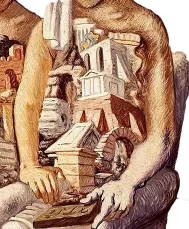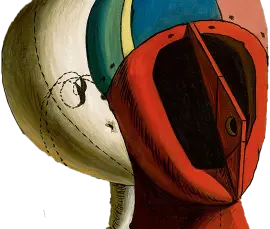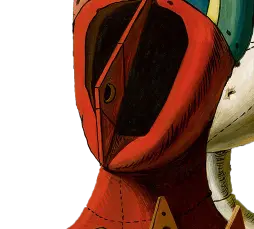Tarot 101: The Elements
- The Minor Arcana: An In-Depth Exploration
- Cups: Embracing Emotions and Relationships
- Pentacles: Grounding in the Material World
- Swords: Navigating Intellect and Conflict
- Wands: Igniting Passion and Inspiration
- The Structure of the Minor Arcana: Understanding the 14 Cards
- Mining the Minor Arcana: Gaining Insight into Daily Life
- What is the Meaning of a Tarot Reading Consisting Mainly of Minor Arcana Cards
- Conclusion

For centuries, Tarot has captivated individuals, acting as a flexible instrument for divination, self-exploration, and spiritual development. Its extensive history and diverse uses have made it a favored practice for those looking for a deeper understanding of their lives and the surrounding world.
A key feature of these cards is their deep association with the tarot four elements: Earth, Air, Fire, and Water. Each Tarot suit is linked to one of these elements, shaping the themes, meanings, and interpretations associated with the cards in that suit. In this article, we will explore the tarot suits elements, particularly highlighting the Minor Arcana, which provides insight into the daily experiences that influence our lives.
The Minor Arcana: An In-Depth Exploration

The Minor Arcana consists of 56 cards that are categorized into four suits—Cups, Pentacles, Swords, and Wands—and is an essential part of the Tarot deck. Each suit symbolizes a unique aspect of human experience and provides guidance regarding the diverse challenges and situations we face in our everyday lives.
Unlike the Major Arcana, which features 22 cards that symbolize significant life events, spiritual lessons, and profound transformations, the Minor Arcana focuses on the more mundane yet equally important experiences that shape our existence. This distinction is vital for anyone looking to interpret the Tarot effectively, as it allows readers to grasp the nuances of everyday events, personal interactions, and the emotional undercurrents that drive our decisions.
To fully appreciate the depth of the Minor Arcana, it is essential to understand the elemental associations tied to each suit. Each suit embodies different aspects of human experience and emotional states, and delving into elements in tarot can greatly enhance your comprehension of the cards, improve your Tarot readings, and enhance your bond with the insight that Tarot provides.
Cups: Embracing Emotions and Relationships

The Cups suit is intrinsically linked to the Water element, symbolizing the movement of emotions, relationships, intuition, and the deep facets of human experience. The imagery associated with Cups often features flowing water, chalices, and other symbols that evoke emotional currents that can be both nurturing and tumultuous. This suit encourages the examination of heartfelt themes like love, connection, and emotional health, prompting individuals to contemplate their feelings and the relationships that shape their existence.
Key Themes of the Cups Tarot Element:
Emotional Connections: The Cups speak to the bonds we form with others, highlighting friendships, romantic relationships, and familial ties. They encourage individuals to nurture these connections and understand their significance.
Intuition and Psychic Abilities: This suit highlights the significance of listening to one's inner voice and having faith in one's instincts, which often results in increased self-awareness and a more profound comprehension of one's emotions.
Relationships and Familial Bonds: Cups illustrate the interactions in personal relationships, providing an understanding of both unity and conflict. They promote transparent communication and sincerity in emotions.
Creativity and Artistic Expression: The emotional depth of Cups often inspires creativity, making it a powerful suit for artists and those in creative fields. It encourages people to direct their feelings into creative activities as a means of expression.
Pentacles: Grounding in the Material World

The suit of Pentacles is linked to the Earth element, symbolizing the physical realm, finances, and practical concerns. Cards from this suit frequently focus on topics related to employment, health, and the concrete aspects of existence.
The earthy imagery associated with Pentacles evokes sensations of stability, growth, and the significance of tending to one’s material assets. This suit acts as a reminder of the need for balance between the spiritual and material aspects, urging individuals to adopt a grounded perspective in their lives.
Key Themes of the Pentacles Tarot Element:
Financial Stability and Career: Pentacles emphasize career trajectories, financial choices, and the quest for economic stability, encouraging people to make well-informed decisions that contribute to lasting security.
Material Possessions and Resources: This suit reflects our relationship with material goods and the importance of resource management, encouraging individuals to appreciate what they have while also seeking to improve their circumstances.
Health and Wellness: Pentacles can indicate issues concerning physical health, encouraging a balanced and grounded approach to well-being. This may involve taking care of one's body, mental health, and overall lifestyle.
Grounding and Stability: The Earth element reminds us of the importance of being rooted and stable in our lives, particularly during tumultuous times. It prompts consideration on how to foster a sense of safety and consistency in both personal and work life.
The Minor Arcana of the Tarot presents a wealth of insights based on the elemental connections of each suit. By grasping the interactions between the suits and their associated elements, one can enrich their Tarot readings and acquire a deeper understanding of the emotional, practical, and spiritual dimensions of life. Whether someone is looking for guidance in romantic matters, dealing with financial issues, or aiming for personal development, the Tarot acts as a valuable companion on the path of self-exploration and insight.
Swords: Navigating Intellect and Conflict

What element is swords in tarot? Swords are associated with the element of Air, representing ideas, intelligence, and communication.
This suit frequently examines disputes, obstacles, and the strength of the mind. Swords reflect the intricacies of making choices, mental lucidity, and the interplay between truth and falsehood, prompting individuals to face their thoughts and the realities they produce.
Key Themes of the Swords Tarot Element:
Intellectual Challenges and Conflict: Swords highlight the struggles we face intellectually and the conflicts that can arise from differing viewpoints.
Communication and Expression: This suit highlights the importance of effectively conveying thoughts and emotions.
Clarity and Decision-Making: Swords encourage the pursuit of truth and clarity, often pushing individuals to make difficult choices.
The Power of the Mind: The suit emphasizes how our thoughts shape our reality, underscoring the value of mental discipline.
Wands: Igniting Passion and Inspiration

Wands are associated with the Fire element, symbolizing creativity, action, and inspiration. This suit embodies passion, ambition, and the drive to achieve goals. Wands represent the energy that fuels our desires and the courage to pursue our dreams, making them a potent force in the Tarot.
Key Themes of the Wands Tarot Element:
Creativity and Inspiration: Wands inspire artistic and creative endeavors, encouraging individuals to express themselves fully.
Motivation and Ambition: This suit reflects the inner drive to achieve and succeed, often propelling individuals to take bold steps toward their goals.
Action and Initiative: Wands emphasize the importance of taking action and seizing opportunities rather than waiting for them to arrive.
Spiritual Growth and Exploration: Fire represents transformation and growth, inviting individuals to explore their spiritual paths and personal development.
The Structure of the Minor Arcana: Understanding the 14 Cards

In the Minor Arcana, each suit has four Court Cards (Page, Knight, Queen, and King) and fourteen cards, numbered from Ace to Ten. Each card carries its own unique meaning and interpretation, influenced by its corresponding element and position within the suit.
Examples of cards in each suit include:
Cups: Ace of Cups, Two of Cups, Three of Cups, and so on, each dealing with different aspects of emotional experience.
Pentacles: Ace of Pentacles, Two of Pentacles, Three of Pentacles, etc., each focusing on different aspects of material life and stability.
Swords: Ace of Swords, Two of Swords, Three of Swords, etc., which delve into themes of thought and conflict.
Wands: Ace of Wands, Two of Wands, Three of Wands, etc., reflecting different stages of inspiration and ambition.
Mining the Minor Arcana: Gaining Insight into Daily Life

The Minor Arcana is a rich source of granular insights into our daily experiences and interactions. By focusing on the elemental associations of the suits, Tarot readers can discern the underlying energies influencing a situation. For instance, a predominance of Cups in a reading might indicate a period of emotional challenges and introspection, while an abundance of Wands could suggest a time of growth, inspiration, and dynamic action.
To conclude, the Minor Arcana acts as a significant resource for grasping the intricacies of daily life. By exploring the elemental associations and themes of each suit, readers can gain profound insights that illuminate personal situations, relationships, and emotional landscapes, enhancing their overall Tarot practice.
What is the Meaning of a Tarot Reading Consisting Mainly of Minor Arcana Cards?

When a Tarot reading is predominantly composed of Minor Arcana cards, it suggests that the issues being addressed are primarily rooted in the everyday experiences of life rather than in major, transformative events. The Minor Arcana consists of four suits—Cups, Pentacles, Swords, and Wands—that represent various aspects of life, focusing on the day-to-day situations, emotions, and practical matters that we encounter regularly.
The presence of Minor Arcana cards in a reading indicates the need to delve into the nuances of daily life, urging the seeker to pay close attention to the smaller, yet significant, challenges that may be affecting their emotional and mental well-being. For example, if a reading reveals a preponderance of Swords, it may signify ongoing mental struggles, anxiety, or communication issues that require resolution. This could manifest as conflicts in relationships, misunderstandings at work, or internal battles regarding personal beliefs and thoughts.
On the other hand, a strong appearance of Pentacles in a reading could highlight practical concerns related to finances, career paths, or material stability. This may prompt the seeker to evaluate their financial decisions, assess their job satisfaction, or consider their long-term security. By understanding the specific meanings associated with the suits of the Minor Arcana, the seeker can gain clarity and focus on the practical steps necessary to address these everyday challenges.
Moreover, the Minor Arcana serves as a reminder that life is often a mosaic of small events and decisions that cumulatively shape our experiences. Each card in this suit provides valuable insights into how to navigate daily dilemmas, emphasizing the importance of mindfulness in our actions and choices.
Conclusion

Tarot is a rich tapestry woven with the threads of elemental energies, and understanding the tarot card suits elements—Cups (Water), Pentacles (Earth), Swords (Air), and Wands (Fire)—can significantly deepen our insights into the human experience. By studying the Minor Arcana and recognizing the elemental influences that shape their meanings, individuals can harness the wisdom of Tarot to navigate their lives more effectively and with greater awareness.
The world of Tarot is vast and intricate, with the elemental aspects adding another layer of depth to your readings. Embracing these tarot suits and elements allows for a more comprehensive understanding of the cards and their implications, fostering a more profound connection with oneself and the universe. Whether you are a beginner, just starting your journey into Tarot, or a seasoned reader seeking to deepen your practice, integrating the elemental dimensions into your Tarot work will undoubtedly enhance your experience.
Incorporating an awareness of these tarot elements can transform your readings into a more holistic exploration of life’s complexities, guiding you not only in seeking answers but also in understanding the broader context of your questions. This enriched perspective empowers you to approach your Tarot practice with curiosity and openness, ultimately leading to personal growth and enlightenment.

















